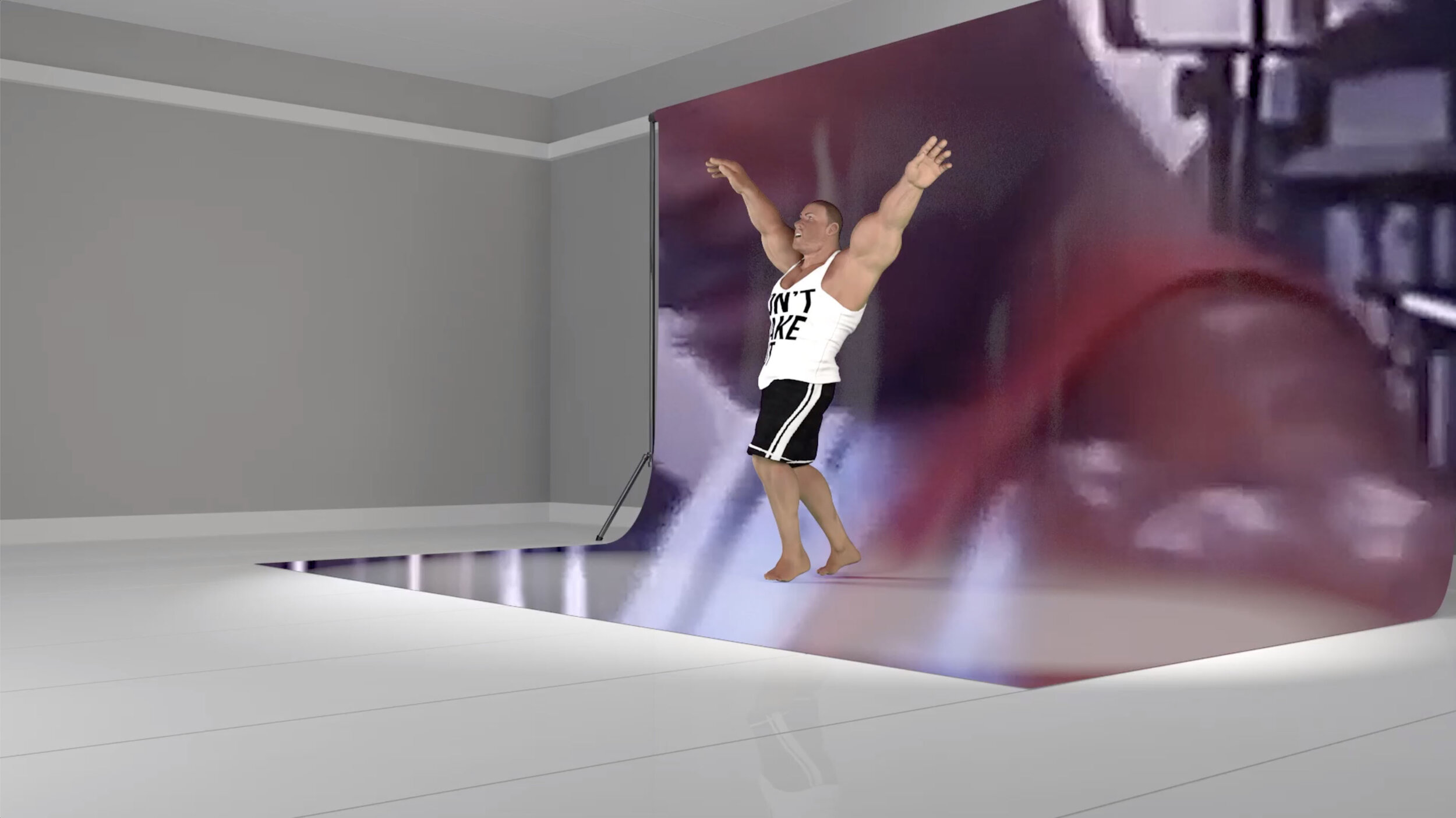Don’t Make Out: Theatrics, Performance, and Parody in the work of Ryan Wurst
By Sharifa Moore
Don’t Make Out by transmedia artist Ryan Wurst explores the performative quality of masculinity in bodybuilding. Set against a greenscreen displaying real footage of bodybuilders and closeups of their oiled bodies, this work questions the construction of hetereonormative practices that allow affection between men under the facade of sport. There is an art-historical context with artists exploring this topic ranging in medium, from high school football players, photographed by Catherine Opie, to a version of idiosyncratic hypermasculinity by Matthew Barney. Notably, Barbara Kruger addressed this subject in her untitled work in 1981, which displays a black and white image of men rough-housing with the text: “You construct intricate rituals which allow you to touch the skin of other men.” In her book, Between Men, literary critic Eve Kosofsky Sedgwick writes about the interaction of competitive athletics and what she refers to as homosocial desire. Sedgwick talks about the relationships between women and the various ways society allows women to engage in close relationships with other women, which Sedgwick states is only striking when compared to the relationships between men. Within the system of patriarchy, male bonding and signs of male affection, are legitimized most often through homophobia. This process thereby creates a social code that allows for behaviors that would otherwise be rejected. Most people need nurturing and affectionate relationships that occur through both romantic and platonic relationships, but society strictly governs these behaviors. Engagement in athletics provides an opportunity to engage in a practice of platonic affection and camaraderie without judgement.
Wurst knowingly subverts this reading of dominant hegemonic structures on the notion of eroticism beyond friendly play, which extends to the point of parody through dressing his animated bodybuilders in white tank tops that display the text: “Don’t Make Out.” The figures dance in synchronized movements that vaguely resemble ballet dancers and the eye-high kicks of The Rockettes. Alternating with scenes of dancing, the bodybuilders move in towards each other, but stop short of making contact with their mouths. This motion is repeated as the bodybuilders seem to forget the appropriate codified behaviors required of their status as heterosexual men. The bodybuilders in Wurst’s artwork are mere identical duplicates lacking any qualities of difference from each other. They vacillate between readings of an active resistance of homosocial eroticism, and desire for the ultimate narcissistic act, where both serve as expressions that undergo a process of repression.
The focus on the physical body within the sport of bodybuilding creates a theatrical reference to classical art through the ways in which the body is flexed and posed. Bodybuilding as a performance takes place on a literal stage and mimics the appearance of a body in action. Social scientist Kenneth R. Dutton refers to this practice as a bravura solo lacking anything cerebral and states that where an interior world is lacking, the physicality of the body forms completeness. In this work, animation as the apparatus for the delivery of criticism regarding toxic masculinity presents an approachable and easily digestible format for these conversations as they are presented to the viewer.
Don't Make Out presented at Supernova Festival 2018, Denver, Colorado
Don't Make Out presented at Momentum Festival 2019, Toledo, Ohio.
Works Cited
Christopher Bedford, Mixed Signals: Artists Consider Masculinity in Sports (New York: Independent Curators International, 2009), 13.
Eve Kosofsky Sedgwick, Between Men (New York: Columbia University Press, 1985), 16.
Kenneth R. Dutton, “The Self Contained Body: The Heroic and Aesthetic/Erotic Modes of Representing the Muscular Body,” in Critical Readings in Bodybuilding, ed. Adam Locks and Niall Richardson (New York: Routledge, 2011), 156.
Watch Don’t Make Out on Vimeo






